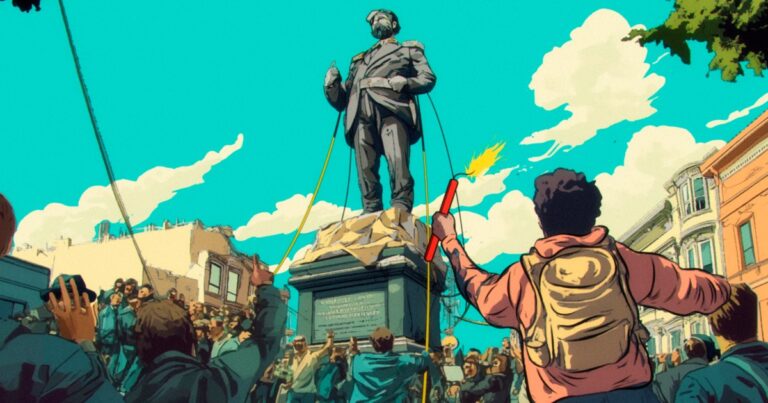San Francisco’s Monument Review: A Question of Values and History
San Francisco is once again in the spotlight as city officials initiate a comprehensive review of its public monuments and memorials. This initiative follows the earlier controversy surrounding the renaming of schools linked to historical figures deemed problematic, sparking debates about the alignment of such commemorations with contemporary ethical standards.
Context of the Review
The current campaign, financed by a $3 million grant from the Mellon Foundation, aims to evaluate San Francisco’s public artwork through a contemporary lens. Critics express concerns that this approach may echo the misguided school renaming efforts, which many viewed as historically uninformed and overly simplistic.
Historical Precedents
This examination of monuments began gaining traction in 2018 when pressure from Native American activists led to the removal of the “Early Days” statue group from the Pioneer Monument. This group depicted a Spanish missionary above a Native Californian figure, which activists argued perpetuated a demeaning narrative.
The conversation around monument removal intensified following the protests in the summer of 2020, which were sparked by the murder of George Floyd. In San Francisco, several statues, including those of Francis Scott Key and Ulysses S. Grant, were vandalized or removed, with local officials endorsing these actions.
Rationale Behind Removals
Mayor London Breed justified the removals by asserting that these monuments did not resonate with San Francisco’s current values. This reasoning often overlooks the complex historical contexts of these figures, such as Grant’s pivotal role in the Civil War despite his past ownership of an enslaved person.
Continuing the Review
Despite the removals, city officials formed the Monuments and Memorials Advisory Committee, charged with examining the narratives surrounding public artworks in light of modern values. This committee is set to conduct an “equity audit” of 98 public art pieces, analyzing which and how these monuments should be preserved, relocated, or possibly removed.
Concerns About Historical Integrity
As the audit progresses in 2023, concerns grow that this process could result in the erasure or misrepresentation of historical narratives. Critics argue that such actions disregard the narratives embedded within these monuments, disregarding their value as teaching tools that can provide insight into both historical injustices and the cultural evolution of San Francisco.
For instance, the removal of “Early Days” denied the opportunity to engage with its complexities and the broader narrative of California’s history, which includes both tragedy and resilience among its Native peoples and the Spanish-speaking Californians.
The Broader Implications
The ongoing examination of public monuments raises a fundamental question: should the historical representations in a city align with contemporary moral standards? Monuments often reflect the values and beliefs of the time they were erected, which may not hold the same relevance to current society.
As noted by Vice President Kamala Harris, understanding our historical context is vital: “You exist in the context of all in which you live and what came before you.” Ignoring or eliminating facets of history can impoverish collective understanding and cultural heritage.



